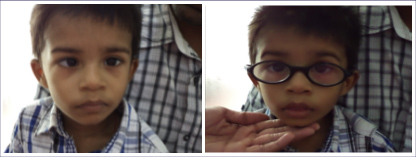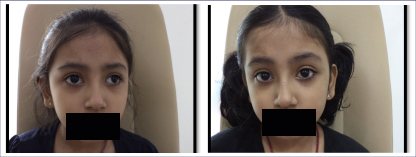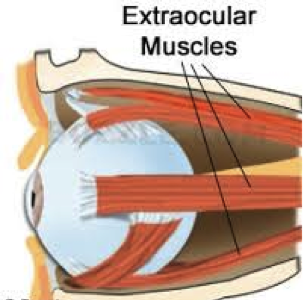Surgery in the childhood is scary and more so if it pertains to the eye – one of the most delicate organs. There is always the fear whether vision will be adversely affected?
LifeCountz approached Dr Prachi Agashe – an paediatric opthalmologist – to discuss and clarify several unanswered queries parents may have.

Before we talk of parents fear for squint surgery, let`s first try to understand what happens to a child with squint.
Squint basically refers to misalignment of the eyes. When this happens there is a difference in the quality of images formed in both the eyes. The eye which is straight always has a clearer image as the image forms on the sharpest point on the back part or the film of the eye called the retina. While in a deviated eye the image forms on a point away from the most sensitive point on the film of the eye. This leads to rivalry of the images formed between the two eyes which do not overlap and initially leads to double vision called diplopia. Gradually the brain then starts ignoring the poorer quality image from the squinting eye leading to decrease in vision in the squinting eye.

We as humans are privileged to use both our eyes together called binocular vision which simply means that the brain integrates the images from both the eyes into a single image giving superior quality of vision as well as depth perception. This functional advantage is lost in kids having squint as they lose the ability to use both their eyes together. They can use only one eye at a time.
Hence squint needs to be managed at the earliest possible age so that the child`s vision and binocularity can be restored. The reason why this needs to be done at a younger age is that this is the age when the vision and brain both are developing and the visual system can be remodelled due to the plasticity of the system. This advantage is lost and the functional benefits reduce as the child grows older.
Not all squints need surgery. Some squints can be corrected with just a correct pair of glasses. The other modalities include special eye exercises or glasses fitted with prism.

Squint without glasses and Squint corrected with glasses
The general way in which squint is managed is that if vision of the squinting eye is less it is first improved by treating for the lazy eye by patching the stronger eye and once that is done the child needs to undergo squint surgery as soon as possible.

“My child is just two years old. Isn`t my child too young for squint surgery?”
This is one of the commonest questions encountered by a paediatric ophthalmologist and understandably so!
The techniques of squint surgery have evolved over the years to make it a day care procedure where in the child can be operated in the morning and can be sent home in the afternoon. Also with the advent of sutureless squint surgery the post operative discomfort is reduced to a minimum. The advances and safety in pediatricanesthesia ensures that the child has a speedy recovery with reduced chances of postoperative nausea and vomiting.

Before Surgery and After Surgery
LifeCountz: Dr Prachi, you must have come across a lot of myths and misconceptions (which galore in India) regarding squint and how some baba is going to put it right or some alternative medicine can put it right?
Do share some with our readers and enlighten them.
Dr Prachi: Yes, true. Actually we spend (I won’t call it waste) a lot of time on clearing the cobwebs and sharing the realities or facts.
- Firstly occurrence of squint in children is considered by some as a blessing in disguise or by some as God`s curse. Whatever the reason good or bad, God is held responsible for the child or a person developing squint.
- Another common belief in the society is that squint will get better as the age of the person increases. Of course miracles can happen sometimes, but a problem that has a definitive cause and effect is less likely to be cured miraculously. The fact is that unattended squints can and do worsen!
- Other common misconceptions for occurrence of squint include sungazing, watching the eclipse, watching TV at a close distance, abnormal postures for reading, reading in dim light and playing on computer or i-pads for long hours. Though sungazing can affect the retina it is not responsible for causing squint. All the other causes though responsible for causing eyestrain do not lead to squint.

- The most common scare about surgery is that it leads to loss of vision. As a matter of fact squint surgery is done on the eye muscles which has nothing to do with vision hence there is a negligible chance of vision getting affected by the surgery.

Let me assure our readers that squint correction not only aligns the eyes of a child but also infuses a sense of self esteem and renews confidence among them to face the society in a better way.
Dr. Prachi Agashe is a consultant Paediatric Ophthalmologist.An MBBS from prestigious Topiwala Nair medical college, Mumbai; Diplomate National Board (DNB)in Ophthalmology from HV Desai hospital, Pune – a high volume Eye hospital involved in a lot of community Eye care in the form of out-reach camps. An advanced fellowship in Cataract and Phacoemulsfication surgery at the KB Haji Bachooali hospital in Mumbai. She was then selected to train under Professor Vijayalakshmi at the Aravind Eye institute in Madurai, which is considered as the “Mecca” of Paediatric Ophthalmology in India.


My 3&1/2 year old boy was born with straight eye but slowly over the past 3 months we have noticed a drastic mis alignment of the left eye which has lowered his self confidence . How can I help him as first as possible since the local ophthalmologist we have seen is not telling us if the situation can be corrected.